This is a special guest article by Liz Holderman, a Worthologist and appraiser who specializes in books and collectibles. You can read this and more articles by Liz at Worthpoint.
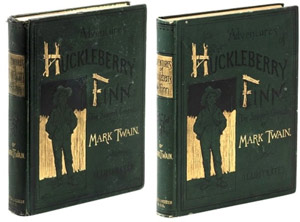
These are both first editions of “Adventures of Huckleberry Finn.” They look the same and sold at the same gallery in 2015. The one on the left sold for $750 while the one on the right sold for $4,000. The one on the right is an earlier printing of the first edition, but is only identified as such by small changes in words and engravings on a very few specific pages.
“Can you tell me what my old (fill in the blank) is worth?”
Stores specializing in antiques, sports memorabilia, used books and vintage clothing hear that hopeful question (over the phone) multiple times a day. The truth is, there’s no way to determine value from a verbal description.
Besides, a single treasure is actually worth a variety of different values. If you want to insure the item, it’s worth one amount. If you want to donate it and take a tax deduction, it’s worth something quite different. If you are bankrupt and a court has ordered you to liquidate, that collectible has yet another value. A trained appraiser is the only one who can document what something is “worth,” and they do that by researching appropriate markets and following specific guidelines.
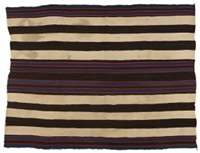
The value of a Native American textiles depends on so many factors, it is impossible to determine without an expert physical examination, as age, tribe, style, colors, dye source, weave and previous ownership all come into play. The blanket on the top sold for $1.5 million in 2012, while the one underneath sold for $400 in 2014.
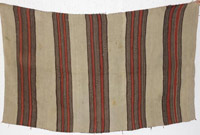
But, let’s be honest, people who call these stores are really asking, “What can I sell it for?” And that is an entirely different question. If you just want to sell, and you want to know what you can probably get for your fill-in-the-blank, here are five pointers for figuring market value.
No. 1
Look for your collectible at online auction sites such as eBay. But beware; pages and pages of minimum starting bids and “Buy it Now” prices are only wishful thinking until there is real purchase activity. And the majority of listings on eBay never sell. To see items that have actually sold, go to the “advanced search” option and select “sold listings” for your candidate. Those sales represent the real values you can expect. And there is a huge difference.
No. 2
Properly identify your collectible. Condition, hallmarks, workmanship, packaging, metal content, serial numbers, provenance (previous ownership), restoration, designer labels and many, many other factors can change the value of otherwise very similar-looking items. Before researching past sales on eBay, be sure to research specific value points in order to match your item correctly. And remember, facsimiles and reproductions abound in every genre, so points of authenticity are important.
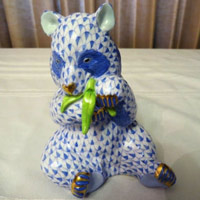
An eBay search for an iconic Herend panda figurine revealed 13 listings that did not sell during October 2015. Their failed starting prices and “Buy it Now” prices ranged from $300 to $550. This one, in mint condition, actually sold in September 2015 for only $160.
No. 3
Don’t rely on published price guides; they are time-sensitive so become obsolete quickly. Also, many collectibles sell for higher or lower amounts in different parts of the United States. More importantly, most price guides don’t indicate how the values were derived. Were they created from dealer asking prices, from the author’s estimates or from actual realized sales? Those values are all different. Some authors write price guides to showcase their own personal collections (in preparation for a future sale), so the assigned values could be inflated.
No. 4
Visit an antique store and take a survey of similar items for sale. But again, beware. Dealers have to pay expenses, rent and a sales percentage to the store. Many items they buy are duds that never sell, ending in a loss. And most stores offer periodic discounts or reduced prices. Therefore, a good rule of thumb is that you might sell something yourself for one-fourth to one-third the price you see marked in a retail store.
And if you see a dusty, overpriced autographed baseball, and you have one like it at home, don’t expect the store to buy yours, too. They already have one they can’t sell.
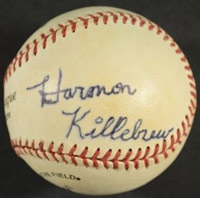
This Harmon Killebrew autographed ball sold for $15 in June 2015. The owner hoped to sell it for $100.
No. 5
Finally, recognize that demand drives value. It doesn’t matter if your heirloom is old or rare or beloved if nobody wants it. Everybody has inherited a vintage sewing machine, an extra set of grandma’s china or a 19th-century bible. Nobody wants another one. And demand also changes over time. It is affected by current events, popular trends, location and the available buying audience.
At the end of the day, you will get for your valuable what someone is willing to pay for it, regardless of what it’s “worth.” It’s up to you to decide if you want to sell it.
You can read this and more articles by Liz at Worthpoint.



